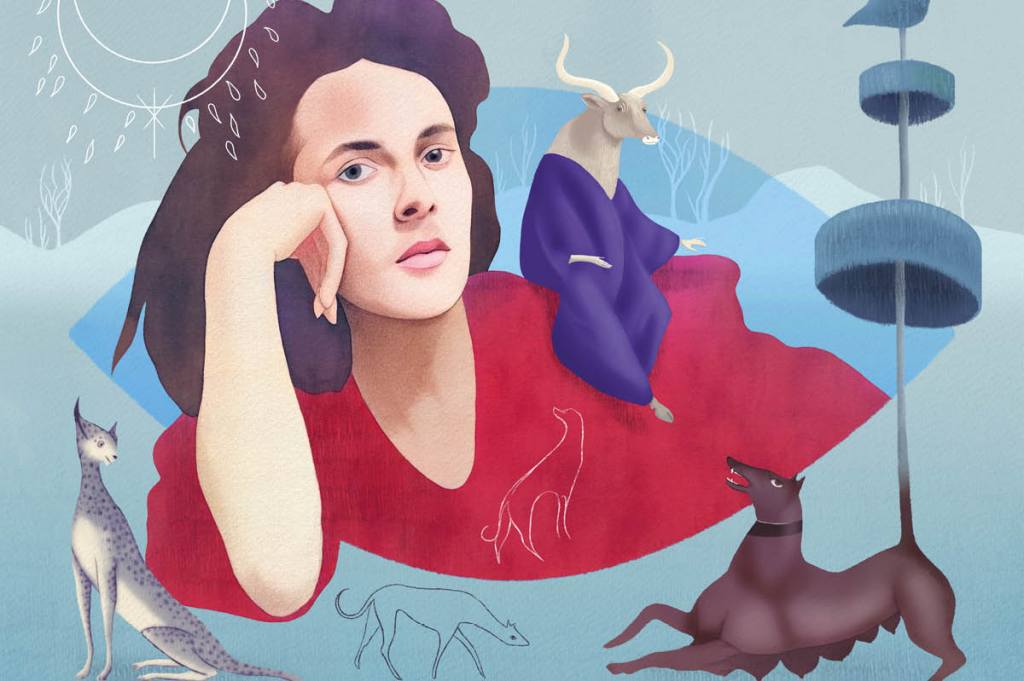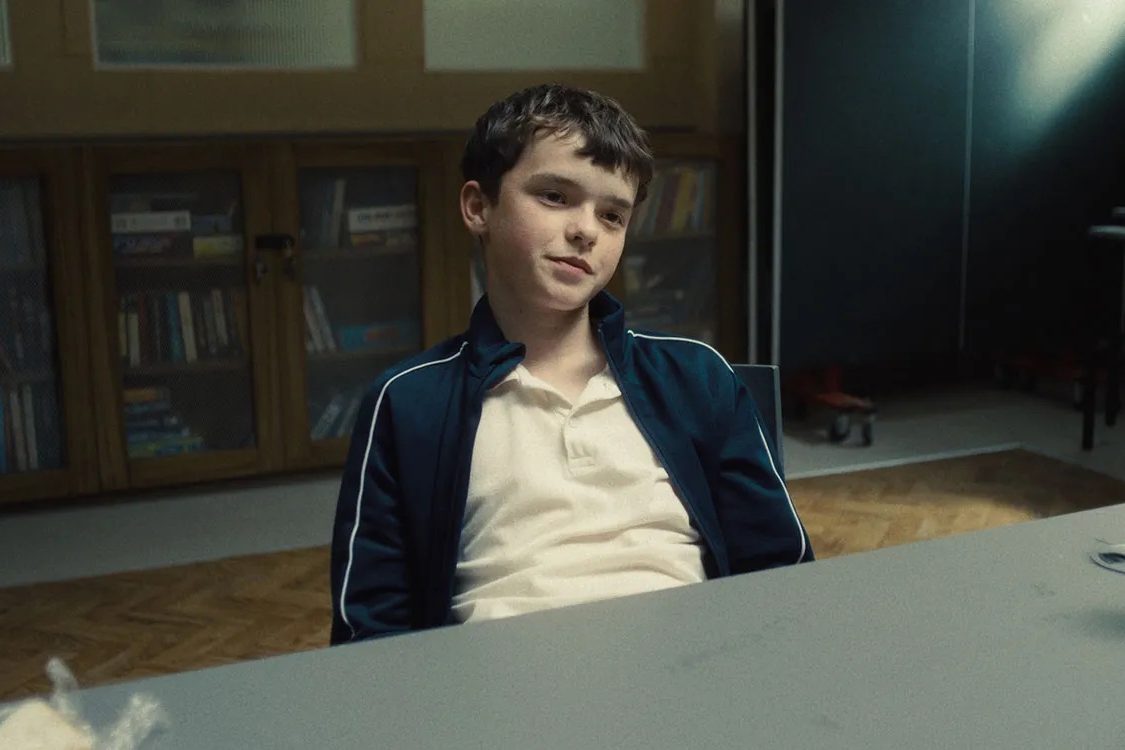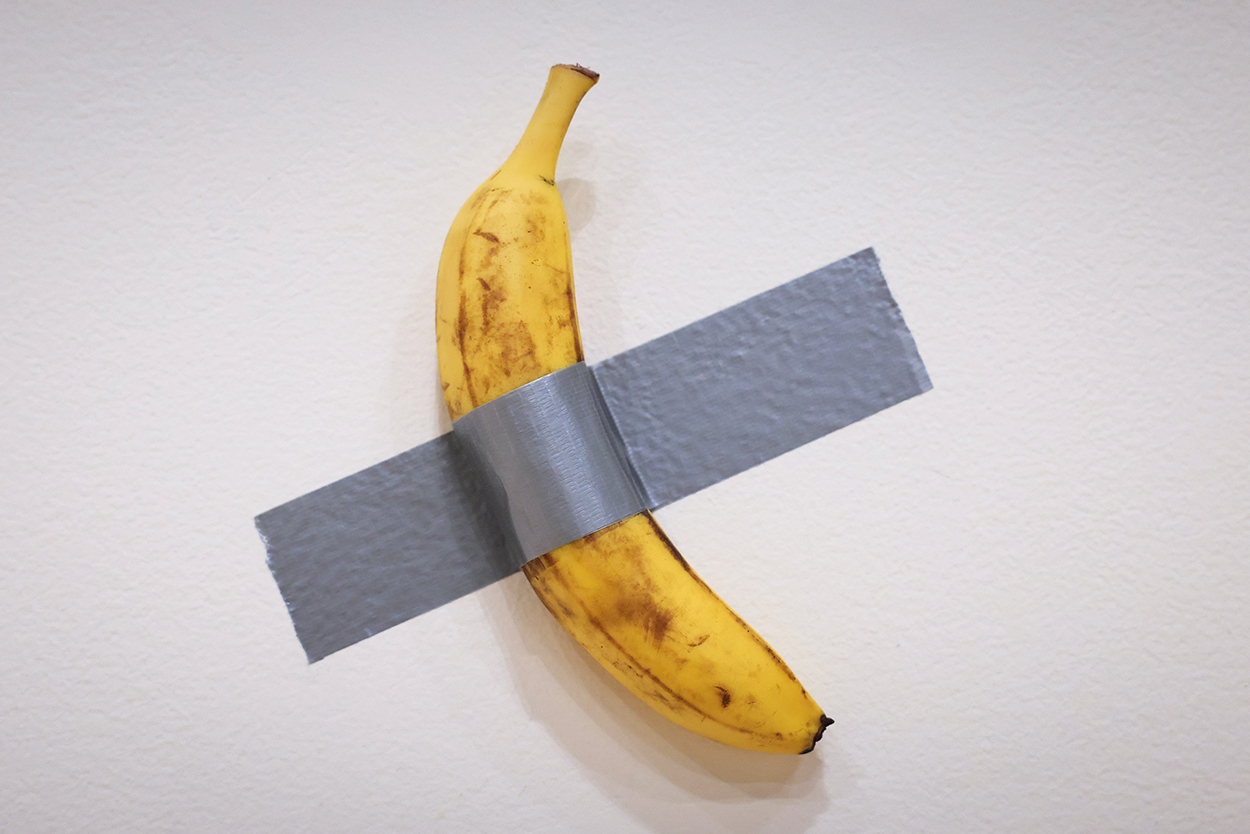“It’s the belief that nothing is ordinary, that everything in life is extraordinary. And being old is no more, no less, extraordinary than being young.” When the artist and writer Leonora Carrington was asked in 2006 what “Surrealism” meant to her, this was her reply. It was a remarkably frank statement from an artist who had, at other points in her career, declared that she “was never a Surrealist,” even memorably asserting that the Surrealist link between women (the femme-enfant) and the muse was “bullshit.” Perhaps it owes its frankness to the interviewer: sitting across the kitchen in Carrington’s house in Mexico City was her cousin, the journalist and author Joanna Moorhead.
Carrington, who was born in Lancashire, England, in 1917, and lived in Paris, Spain, Portugal, Mexico and New York, only died in 2011. For years, she was the “last living Surrealist,” an accolade which only began to bring her more attention in the latter part of her life, as groundbreaking art criticism by the likes of Whitney Chadwick and Gloria Orenstein drew attention to her richly psychedelic, uncompromisingly difficult art.
In the years since her death, however, her fame has skyrocketed: she has gone from an all-but forgotten participant in one of art’s most confusing movements to inclusion in institutional art galleries, major exhibitions and solo retrospectives (including one, this year, at Fundación MAPFRE in Madrid). She is the subject of endless books and biographies: this summer alone, there is Moorhead’s Surreal Spaces and the graphic novel Armed with Madness by Mary M. and Bryan Talbot. Something about her distinctive iconography and life story has afforded her a much-coveted spot in the pantheon of trendy women artists — not unlike another Mexican Surrealist, Frida Kahlo.
For readers and gallerygoers alike, Carrington is the eccentric Surrealist feminist who left behind a life of privilege (debutante balls, racing at Ascot, the promise of a “good” husband) for the delights of artistic Paris and a relationship with a man old enough to be her father, her fellow Surrealist Max Ernst. Amusingly, upon seeing them together, the art collector Peggy Guggenheim remarked “they looked exactly like Nell and her grandfather in The Old Curiosity Shop.”
It is hard to deny that elements of Carrington’s life sound more like outrageous plot points for a feature film than they do the life of a real twentieth-century woman. Carrington was born the year Guillaume Apollinaire coined the word “surrealism” in a letter to Paul Dermée. After a childhood spent in English manor houses, Carrington was expelled from two Catholic schools, was reluctantly presented at court and ran away to Paris.
After becoming acquainted with the rest of the art scene — from female Surrealists Leonor Fini and Lee Miller to Pablo Picasso — she and Ernst retreated to the countryside where, at the outbreak of World War Two, the German-born Ernst was forced into an internment camp. During a mental breakdown (which she described in harrowing detail in her 1945 memoir Deep Down), Carrington was committed to an asylum, and received experimental Cardiazol treatment that induced terrifying seizures. Eventually rescued by her childhood nanny (who, if the story weren’t dramatic enough already, arrived in France on a submarine), Carrington evaded her family’s plans to ship her to South Africa by feigning stomach upset and fleeing into a café.
After her escape, she entered a marriage of convenience with the poet and diplomat Renato Leduc, who helped her leave Europe for New York. From New York, Carrington moved to Mexico, where she remarried and had a family, continued to paint and was despised by Kahlo, who referred to the influx of Surrealists as “those European bitches.” In Moorhead’s illuminating if rather methodical Surreal Spaces, this story of motion is told through Carrington’s houses — from the frescoes she painted on the walls of the house she shared with Ernst in Saint-Martin-d’Ardèche, to her childhood nursery, and the narrow single bed in her final home in Mexico City.
Carrington’s life, then, is the story of the twentieth century in microcosm, with its ideological battles and displacements. At one point in the late 1930s, Leonor Fini became so enraged by Ernst’s having invited the Stalinist poet Tristan Tzara to stay that she took a knife to his portrait of Carrington. It’s also — perhaps more gratifyingly for those trying to condense it into the brief pages of a graphic novel — the story of a woman who refused to do what she was told. Carrington rebelled not just against her privileged upbringing, but against every form of sexist repression she faced. Upon her arrival, Joan Miró asked her to buy him a box of cigarettes; she told him he “could bloody well get them himself.”
But Carrington’s paintings, as well as her bizarre short stories — full of flying dead rabbits, anthropomorphic creatures, and sex beneath “mountains of cats” — are often far harder to parse than her biography, and far less clear-cut than an edifying story of “feminist success.”
Carrington’s relationship to the disconcerting, discombobulating theories and art of André Breton, Salvador Dalí and Man Ray was fraught. The men of the movement had established it along barely-concealed gendered lines: according to Breton’s second Surrealist Manifesto in 1929, “the problem of woman is the most marvelous and disturbing problem in all the world,” though few other women in the movement — Lee Miller, Meret Oppenheim and Eileen Agar among others — have received a fraction of the attention paid to Carrington.
What Breton’s “problem” might have been is unclear, but its solution is unavoidable: in the world of Surrealism, women were muses — the idealized femme-enfant at the center of creation — rather than artists. On the December 1929 cover of the same journal that published the manifesto was Rene Magritte’s “La Femme Cachée”: a photo of a naked woman sits at the center of the page, while (fully clothed) portraits of each of the men involved in the Surrealist movement form a border around her. In each, the man has his eyes closed as if he were in some state of bliss: the position of women was clear.
In much of her work, Carrington seems to be rebelling against this one-dimensional view. In her self-portrait “Inn of the Dawn Horse” (1938) — painted when she was only twenty-one — she sits on a blue chair in a pair of white jodhpurs, her hair billowing around her. A rocking horse — a symbol she’d identified with since childhood — hovers in the air above her, and another horse runs out- side in a verdant landscape, not unlike the near-mythical, disturbing setting of her later painting, 1942’s “Green Tea.” If the horse is a symbol of Carrington, is this a portrait of her desire for freedom? Only one of the animals is truly free: the wooden one, above her, is constrained by the room it is in, and can only move back and forward. There’s another reason to identify a biographical feminist impulse in this painting: to the left — heralded by a cloud — is a hyena with a distinctly anthropomorphic face. With one leg raised as it prances, the row of teats on its stomach is visible. Is this the animal Carrington so wonderfully describes in her short story “The Debutante” — about a woman who refuses to go to a ball in her honor, and has her hyena friend take her place?
Carrington returned to the animal aspects of women time and again. In her portrait of Ernst from a year later, Carrington’s signature symbol of a white horse is transformed into an ice sculpture, while another horse figure is trapped within the lantern Ernst holds. For Carrington, her own freedom was hard-fought and elusive; she was, often, frozen in place as Ernst’s model. In a painting from the other end of her career — made for a poster for the Women’s Liberation movement — Carrington’s visions of a “new Eve” (complete with apple in hand) are delightfully animalistic, with hairy bodies and long, inhuman limbs.
But, more often than not, Carrington’s visions refute any easy understanding. In her 1953 work — painted in Mexico — “And then we saw the Daughter of the Minotaur!”… what is going on? Who are “we”? The two children at the center of the canvas, who stand across a table from the horned minotaur figure? What, or who, is the figure with the triangular white-sheeted head? It looks oddly like a surreal wimple, reminiscent of Carrington’s education at the hands of Catholic nuns. And why are these figures all situated in an architectural setting that has clouds flowing through it,with a dancing, ghost-like body in the background? It’s a painting of discovery, of a moment of otherworldly magic, but any art historian would be hard pressed to define what is happening.
It is these paintings — like the discordant forms of “The Meal of Lord Candlestick” (1938), or the Bosch-like detail of “Les Distractions de Dagobert” (1945) — that are perhaps the most exciting of Carrington’s work, as she took the dogma of Surrealism, with its emphasis on the unconscious, the unknown and the subservient position of women — and made it her own. Figures from her family are made into ludicrous animals; symbols from her childhood recur in dream-like visions, and there seems to be no barrier between the animal and the human.
It is Carrington’s life story, rather than her art, which is the focus of these latest two books, but there’s much more to be gained by getting lost in her paintings.
This article was originally published in The Spectator’s July 2023 World edition.

























